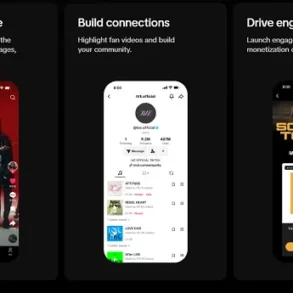You may or may not agree whether Elon Musk has been “good” for Twitter (RIP), but you must admit he’s been great for decentralized social media. In the days, weeks and months following the billionaire’s forced acquisition of “X,” there was a mass exodus of “bird app” users. People were desperate, so desperate, in fact, many were willing to give Zuckerberg’s latest data trap, Threads, a try.
This profile is part of CoinDesk’s Most Influential 2023. For the full list, click here.
Click here to view and bid on the Racer NFT created by EFDOT. The auction will begin on Monday, Dec. 4, at 12 p.m. ET (17:00 UTC) and ends 24 hours after the first bid is placed. Holders of a Most Influential NFT will receive a Pro Pass ticket to Consensus 2024 in Austin, Texas. To learn more about Consensus, click here.
Crypto and the wider world of open-source, distributed tech has social media alternatives, too. There’s Bluesky, Blockstack, DeSo, Farcaster, Friend.Tech, Gab, Hive, Lens, Lenster, Mastodon, Minds, Mirror, NOSTR, Steemit and many, many more. There were apps that launched this year, and apps that upgraded, revamped or overhauled.
Some, like Mastodon, have seen such an influx of users that the platform is essentially unrecognizable from this time last year. Others, particularly those on a blockchain, are not quite sure if they could even scale to the hundreds of millions to billions of users that log into, post on and love Twitter, Facebook and Instagram today.
It was the year of decentralized social media. Here are a quick selection of notable moments.
Friend.Tech
In September, Friend.tech, the buzzy blockchain-backed chat room protocol, spiked to $1 million in daily revenues, technically beating out Uniswap, the largest decentralized exchange. Friend.tech saw immediate traction after launching in August. It was built by a pseudonymous developer known as Racer and the rest of the team that built Stealcam, a gamified NFT art project and social experiment.
The app, built on Coinbase’s Base network, is notable for its relatively painless onboarding experience but launched in invite-only mode. It picked up notoriety for weekly rewards airdrops to users (throughout a planned six-month beta period, friend.tech will airdrop a total of 100 million “points”), as well as the ability to buy and sell “keys” (originally “shares”) in profiles. The app also became home to a number of OnlyFans content creators.
“We initially shared the app to start load testing and didn’t expect it to go viral,” Friend.tech co-founder Racer told Decrypt in August. “So we’re doing a bit of catch-up.” A funny thing to say, in retrospect: They didn’t expect a financialized social media app to go viral, but that’s what financialized and social media apps do.
Farcaster is one of a few Twitter clones that seems to have a life of its own. While it only counts a little more than 10,000 users, including Vitalik Buterin, the app is undoubtedly one of crypto’s most notable social media phenomena. Anytime someone asks if there are “good decentralized social media” protocols yet, it will be mentioned, usually more than once.
This year, the app — being built primarily by two ex-Coinbasers, Dan Romero and Varun Srinivasan — saw two notable updates. First the project migrated to the OP Mainnet, an Ethereum layer 2 that uses scalable optimistic rollups. More recently, Farcaster opened its doors out of “invite only” to become fully permissionless.
“We’re excited to announce that our social network, Farcaster, is 100% permissionless,” Romero posted on X. “Anyone with an internet connection and some ether can sign up and use the network.”
 Farcaster co-founder Dan Romero (Mason Webb/CoinDesk)
Farcaster co-founder Dan Romero (Mason Webb/CoinDesk)Aave founder Stani Kulechov’s swing at social networking called Lens also took a step forward towards becoming permissionless. In early-November, the sister app to one of the largest decentralized lenders, announced it launched its version two (V2) introducing the most significant user monetization features yet in Web3 social media.
Kulechov described Lens V2 as “more modular,” meaning users have “greater autonomy and flexibility” in their social media experiences. This includes a pay-to-read feature, tipping, subscribing and donating, with potentially more revenue avenues available later.
The app also added a feature that seems to have DAOs in mind: the ability for “profiles” to be managed by more than one person.
A lot can change in a year, and decentralized social media is just getting going.
This post was originally published on this site be sure to check out more of their content







